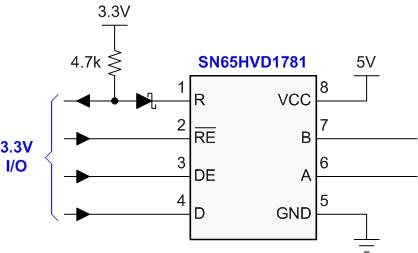Hi all!!!!
I have to interface the UART(RS232) interface operating at 3.3V logic levels (from processor) to RS485 transceiver(SN65HVD1781) operating at 5.0V connected to TTL level interface. For the mentioned purpose can I use a level converter(suggest part number) or directly I can connect RS232 signal RS485 transceiver.
Thanks and regards
-Anand


